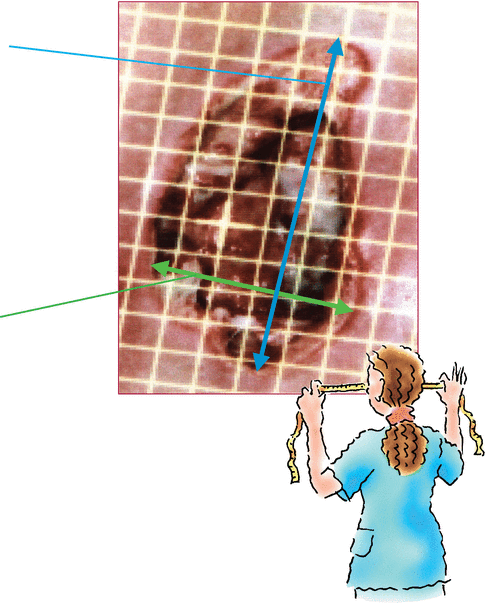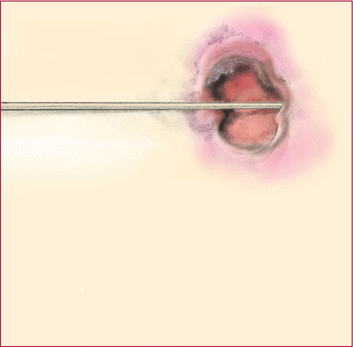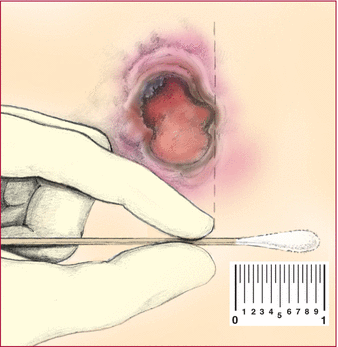When measuring a wound, you must determine its length, width, and depth. (Measuring wound depth is described on page 32.) You must also measure the surrounding areas.
- Length
- Measure the greatest length with a head-to-toe orientation using a centimeter ruler.
- In this photo, note the line used to illustrate length.
- Measure the greatest length with a head-to-toe orientation using a centimeter ruler.
- Width
- Next, determine the longest distance across the wound (side to side), at a 90-degree angle to the length.
- In this photo, note the relationship between length and width.

- Next, determine the longest distance across the wound (side to side), at a 90-degree angle to the length.
- Surrounding areas
- Note areas of erythematous (reddened), intact skin; indurated (or hard) skin; and white (macerated) skin.
- These areas are measured and recorded as surrounding erythema, induration, and maceration, not as part of the wound itself.
- Note areas of erythematous (reddened), intact skin; indurated (or hard) skin; and white (macerated) skin.
Measuring wound undermining and tunneling
Undermining, tunneling, and sinus tracts were discussed in Chapter 2. Because tunneling and undermining may be more extensive in one part of a wound than another, measuring and documenting the location (use a clock face) is important.
Probing the issue
- Put on clean or sterile gloves based on your facility policy. Gently probe the wound bed and edges with a sterile applicator to assess for wound undermining or tunneling.
- Gently insert the applicator around the wound edges for undermining or into the wound in the direction where the deepest tunneling occurs. Below is a photo of undermining measurement.

Marking progress
- Grasp the applicator where it meets the wound edge.
- Remove the applicator, keeping your hand in place, and place it next to the measuring guide to determine the measurement of the undermining in centimeters, as shown below.
